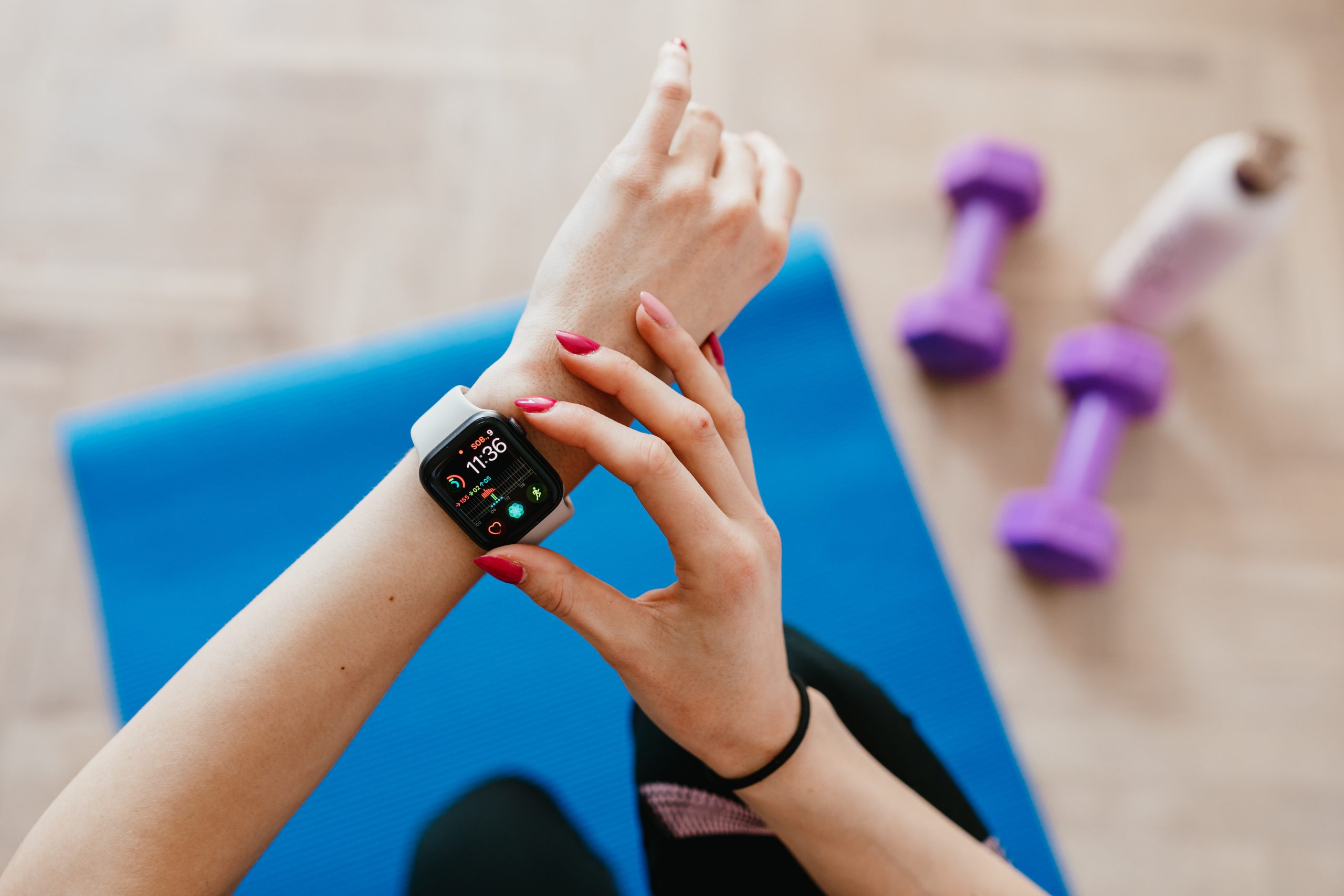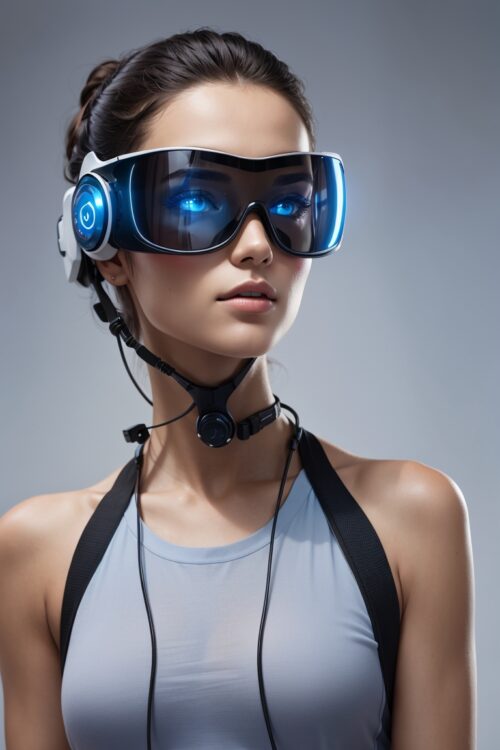Smart wearables help our daily activities. They are electronic devices usually incorporated into regular accessories that are worn around the body like bracelets, wristwatches, rings, etc. While smart wearables maintain the features of the accessories in addition to features like data tracking and monitoring using sensors and Artificial Intelligence.
Usually, these data are transferred to the smartphone via Bluetooth where accumulated information is displayed in an application to the user. Information like heartbeat, temperature, and steps taken is displayed in the app. Manufacturers are constantly working to bring new features into their smart wearable product lineup by adding new smaller sensors and further utilizing the power of software technology.
Different types of Wearables devices
Smartwatches – One of the most widely available smart wearables available in the market today. They are made in the same form factor as a digital wristwatch but fitted with a touchscreen display and do a lot more than tell the time. It can track fitness, answer calls and reply to text messages.
● Sport Bands – They are usually worn around the arm and are directed towards the athletes to track their performance. They are made water and sweatproof. Sport Bands are fitted with lots of high-end motion sensors for the most accurate heart rate and distance measurement.
● Virtual Reality Headsets – It creates an entire virtual world directly in front of your eyes. It is widely considered to be the successor to smartphones.
● Smart Jewellery – They are mostly targeted towards women. They are made like traditional jewelry but consist of sensors and another tech that will notify the user of their texts and calls. They can also communicate back to the smartphone to send steps and heart rate data.
● Smart Clothing- Electronic chips and sensors are incorporated into the clothing. This usually helps the user to maintain their fashionable look while utilizing the smart wearable features at the same time.
Smart wearables in specific fields
Advancements in technology have led to the boom of smart wearables. And in turn, wearable technology has taken off rapidly in all directions. Both traditional designer brands to software companies and health institutions are working to create the best in-line wearables for the consumers
● Smart wearables in health monitoring –
Incorporating state-of-the-art sensors and medical-grade software has led to a boom in intelligent health wearables. Smartwatches and smart bands can track heart rates continuously, detecting early heart failures. Modern smartwatches and bands can also track the temperature and they can also take an ECG. Their connectivity to the internet and smartphone allows them to analyze the monitored data and notify the user in case of any abnormal readings.
Smart wearables have allowed users to maintain their fitness and health conditions without any compromise on style and fashion. Fitbit and Apple are two of the most widely used smartwatch and heath wearable brands. Every year both brands are fitting their products with more advanced technology and better sensors, they are regularly working with software companies to utilize more Artificial intelligence and better analytical software to maximize their precision. ECG was one of the latest features that were added to the apple watch. The smart wearables brands are also working with fashion brands to build accessories for the wearables. Apple collaborates with Italian luxury brand Hermes to create special edition watch straps for the apple watch.
● Smart wearables in Fitness tracking –
Smart wearables in the form of fitness trackers are convenient for measuring activities. There are various types of fitness trackers available on the market and depending on the model they can perform a range of functions. Fitness trackers are usually more accurate than smartwatches because they usually perform fewer functions than smartwatches. Fitness trackers are fitted with more sensors and don’t have a display.
Fitness trackers are generally made in the form of bands and are worn around the arm or leg. Common sensors used in fitness trackers are GPS, a 3-axis accelerometer, and an Optical sensor. Motion sensors and optical sensors are the heart of fitness. They help the tracker to accurately analyze the performance of the athlete. They are also often fitted with additional features like a music controller and AI voice assistant. The fitness tracker records the data and transmits it back to a Smartphone for visual representation.
● Smart wearables in Entertainment –
Smart wearable devices like Virtual Reality (VR) Headsets, smartwatches, and smart glasses allow consumers to stream videos, play and store music and connect and browse the internet. While devices like VR headsets and smart glasses directly project the content to the eyes of the user. Smartwatches are more like smartphones attached to the wrist. They allow the consumer to download apps from the app store, take calls, reply to messages, measure fitness, record health data stream music, and communicate hands-free using AI voice assistant. Smart glasses on the other hand completely work hands-free. They are mostly used in industries like container shipping and warehouses where AI and Augmented reality helps them to organize shipments. Google glasses were one of the most famous smart glasses to be produced although now it is only available for commercial purposes,
Virtual Reality headsets are the future of devices built for entertainment purposes. VR headsets usually disconnect the user from the real world and lead them to an alternate reality. It projects 3D High-Definition projections, which make the user feel as if things are happening in real life. Various gaming companies are utilizing this feature to make games more life-like. Meta, a company is designing an alternate reality world called Metaverse and it will utilize the full potential of VR headsets in the future.
Final Thoughts
Software giants like Google and Facebook are constantly bringing new technologies into the field of wearables. Interconnectivity among smart wearables is one such technology that is being made widely available. Manufacturers are trying to make the devices more intuitive and natural to use. The use of better haptic motors will enable better two-way communication between the wearable and the user. The Fastrack evolution of Artificial Intelligence will enable a completely hands-free experience with smart wearables. Virtual Reality headsets are widely regarded as the successor to smartphones, and they are expected to shrink in size in the coming years, thus creating alternate virtual reality while breaking new ground in the field of technology.



